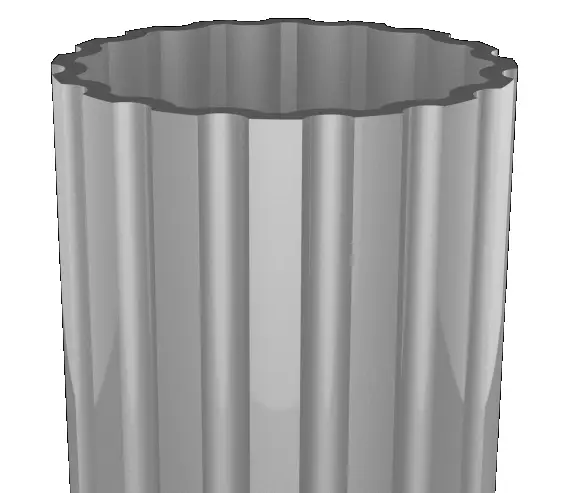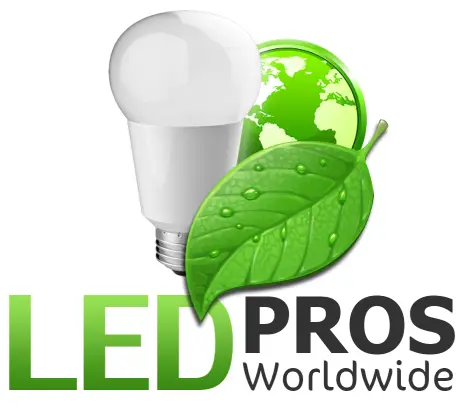When it comes to illuminating commercial spaces, particularly parking lots, the height of the light poles plays a crucial role in ensuring proper visibility and safety. A commercial light pole is a vital component of any well-designed lighting system, but determining the appropriate height can be a complex task. In this article, we’ll shed light on the factors that influence the height of commercial light poles and provide guidance on selecting the optimal height for your specific needs.
Understanding the Types of Commercial Light Poles
Before delving into the heights of commercial light poles, it’s essential to understand the different types available. The two most common types are:
1. Parking Lot Light Poles: These poles are specifically designed for illuminating parking areas and come in various heights to accommodate different lot sizes and layouts. Discover more about Improve a Parking Area with a Commercial Light Pole here.
2. High Mast Light Poles: These poles are used for a wide range of applications beyond parking lots, such as sports fields, industrial sites, and large outdoor events. They also come in various heights to suit different needs.
Both types of poles can be made from materials like aluminum, steel, or fiberglass, each with its own advantages in terms of durability, cost, and aesthetics.
Factors Influencing Commercial Light Pole Height
Several key factors come into play when determining the optimal height for a commercial light pole. These include:
1. Area Size and Layout
The size of the area you need to illuminate is one of the most significant factors in determining the appropriate height for your light poles. Generally, larger areas require taller poles to ensure adequate coverage and uniformity of light distribution. For example, a vast parking lot may require poles ranging from 20 to 35 feet in height, while a smaller lot may only need poles between 12 and 20 feet tall.
2. Mounting Height Regulations
Before finalizing your light pole height, it’s crucial to research and adhere to any local regulations or maximum mounting height allowances. These regulations may vary depending on the specific location and zoning laws. Consulting with a lighting expert can help ensure compliance with these regulations while still achieving optimal illumination.
3. Surrounding Environment
The environment surrounding your commercial space should also be taken into account when selecting light pole heights. In densely populated areas, shorter poles may be preferable to minimize glare and light trespass onto neighboring properties. On the other hand, rural settings may allow for taller poles to maximize coverage and minimize the total number of fixtures required.
4. Fixture Spacing and Beam Angles
The height of your light poles directly impacts the spacing between fixtures and the beam angles needed to achieve uniform illumination. Taller poles generally require fewer fixtures, as they can cover a larger area per pole. However, this must be balanced with the appropriate beam angles to ensure that light is directed precisely where it’s needed, minimizing wasted light and potential glare issues.
Choosing the Right Commercial Light Pole Height
With so many factors to consider, selecting the perfect height for your commercial light poles may seem daunting. However, by following these steps, you can arrive at the optimal solution:
1. Consult with a lighting expert to assess your specific needs and any local regulations.
2. Determine the size and layout of the area you need to illuminate.
3. Consider the surrounding environment and any potential glare or light trespass issues.
4. Evaluate the spacing and beam angles required to achieve uniform illumination.
5. Select a pole height that balances all of these factors while prioritizing energy efficiency and cost-effectiveness.
 |
FAQs
1. Q: What is the average height of a commercial light pole?
A: The average height of a commercial light pole can vary depending on the application, but most parking lot lights range from 12 to 35 feet tall. Discover more about Illuminate Parking Lots With Our Commercial Light Pole here.
2. Q: Can I use the same light pole height for all areas of my commercial property?
A: Not necessarily. Different areas may have varying illumination requirements and environmental considerations influencing the optimal pole height.
3. Q: How do I ensure my light poles comply with local regulations?
A: Consult with a lighting expert or your local zoning department to understand any specific regulations or maximum mounting height allowances in your area.
4. Q: What materials are commercial light poles typically made from?
A: Commercial light poles can be made from a variety of materials, including aluminum, steel, and fiberglass, each with its own benefits and drawbacks.
The Role of Pole EPA Values
When selecting the appropriate height for a commercial light pole, it’s essential to consider the pole’s EPA (Effective Projected Area) value. The EPA value represents the surface area of the pole that is exposed to wind forces, which can significantly impact its stability and structural integrity. A higher EPA value indicates a greater susceptibility to wind-induced stress, which may require a more robust pole design or additional support measures.
The EPA value is influenced by factors such as the pole’s height, diameter, and any attached fixtures or accessories. As the height of the pole increases, so does its EPA value, as more surface area is exposed to wind forces. This is particularly important in areas with high wind speeds or frequent severe weather events, where the risk of pole failure due to wind stress is higher.
To mitigate these risks, manufacturers often provide EPA charts or calculators that help determine the appropriate pole specifications based on the desired height and environmental conditions. By selecting a pole with the appropriate EPA rating for your specific application and location, you can ensure a safe, stable, and long-lasting lighting solution.
Understanding the US Wind Map
In addition to considering pole EPA values, it’s crucial to understand the wind speed and patterns in your specific location. The US Wind Map, developed by the National Renewable Energy Laboratory (NREL), provides valuable insights into the average wind speeds and prevailing wind directions across the United States.
The map is divided into different wind speed zones, ranging from low (less than 4 meters per second) to high (greater than 10 meters per second). By understanding the wind speed zone in which your commercial property is located, you can make informed decisions about the appropriate pole height and design to withstand the expected wind forces.
For example, in areas with higher wind speeds, it may be necessary to select a shorter pole height or a more robust pole material to minimize the risk of wind-induced damage. Conversely, in areas with lower wind speeds, taller poles may be more feasible without compromising stability or safety.
It’s important to note that the US Wind Map provides a general overview of wind patterns and should be used as a starting point for understanding your local conditions. To obtain more precise wind data for your specific location, consult with a local meteorological expert or refer to historical weather data from nearby weather stations.
Putting It All Together
By considering both pole EPA values and the US Wind Map when selecting the height of your commercial light poles, you can ensure a lighting solution that is not only effective and efficient but also safe and reliable. A well-designed lighting system should take into account the unique environmental challenges of your location, balancing the need for optimal illumination with the structural integrity and long-term durability of your light poles.
Remember, the key to success is working with experienced lighting professionals who can guide you through the process of selecting the right pole height, material, and design for your specific application. By taking a comprehensive approach that considers all relevant factors, you can create a lighting solution that enhances the safety, security, and aesthetic appeal of your commercial property for years to come.
To Sum Up
A commercial light pole is an essential component of any well-designed lighting system, and its height plays a significant role in ensuring optimal illumination, safety, and energy efficiency. By understanding the factors that influence pole height, such as area size, local regulations, surrounding environment, and fixture spacing, you can make an informed decision when selecting the perfect height for your commercial light poles. Remember to consult with a lighting expert to ensure your chosen height meets all necessary requirements while providing the best possible lighting solution for your commercial space.
[gravityform id=”1″ title=”true” description=”true”]
